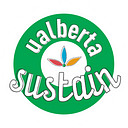Pipeline pics and public pedagogy
Carrie Karsgaard maps the Instagram communities contesting the Trans Mountain Pipeline expansion.
By Jenna Bell
There are several controversial topics which should be avoided at the dinner table — politics, religion, whether pineapple belongs on pizza, the pronunciation of GIF. All these discussions can quickly become heated. In Canada, another topic to avoid at the dinner table would be the expansion of the Trans Mountain Pipeline.
The project aims to twin an existing oil pipeline which was built in 1953, stretching from Edmonton to Burnaby, B.C. The expansion of this pipeline will triple the pipeline’s capacity to export oil from the West coast. When this proposal was made, proponents advocated for its potential to bring great economic growth to the country. But then dissenting voices were raised; concerned about the disruption and possible harm threatening communities, wildlife and the environment.
Doctoral candidate Carrie Karsgaard is investigating this debate through an unconventional lens — social media. Karsgaard studies Educational Policy Studies at the University of Alberta. She has been drawing data from Instagram to explore how public conversations are shaping the pipeline controversy. Using text, images, hashtags and locations — this social media platform provides a unique angle for Karsgaard to study this debate and piece together patterns.
Why did you decide to use social media to study the Trans Mountain Pipeline controversy?
In 2016, I was in my first year of studies, and I thought I was going to research something else entirely. But I was watching the news as I travelled back and forth between my home in B.C. and the University of Alberta. B.C. news featured all kinds of protests — by Coast Salish water protectors, Vancouver and Burnaby residents, people building tiny houses along the pipeline in Secwepemc territory. And then I would come to Alberta, and the news would feature a picture of Rachel Notley in front of a Canadian flag, speaking about the importance of oil for our economy. I was taken with the difference between these mainstream media framings, so I decided to start watching social media for this issue.
If that’s what we’re seeing in the mainstream media, what are the different things you’re seeing people say on social media?
Social media expression converges and moves apart around a variety of issues, and big data allows me to analyze these clusters and moves. So, for instance, by mapping Instagram hashtags and imagery, you can see clusters of posts concerned with the health of orca whale populations, resisting increased tanker traffic in the Port of Vancouver. Other hashtags, like #beautifulbc and #vancouverisawesome, are linked with imagery of west coast beaches and landmarks, potentially indicating a desire to keep local lifestyles alive.
I would say the predominant discourses and imagery connect the pipeline to the United Nations Declaration on the Rights of Indigenous Peoples and the necessity for Indigenous consent to pipeline development. By contrast, pro-pipeline groups are less prominent, and primarily use nationalist discourses to promote the pipeline — with hashtags like #canadaproud and #albertaproud or #oilsandsproud.
Have you seen these discourses coming together in interesting ways?
My research was first inspired when I saw a tweet that referenced the pipeline, and it also included the hashtags #climatechange and #MMIW — for missing and murdered Indigenous women. I thought this was an interesting collection of issues. When the pipeline is being built, temporary camps are set for the workers who are mostly men. Historically and currently, this brings a lot of violence on Indigenous women. This news is now quite prominent in even mainstream media. But at the time I thought “wow,” people are really positioning this issue in a different way from those who are interested in preserving orca populations.
As your research moves forward, what are you hoping to learn from this?
I’m really interested to know to what extent people can resist on social media — because it is a corporate platform. It still is a place that is fraught with surveillance, corporate agendas and algorithms that shape what people see and don’t see. But it appears that on social media most users are anti-pipeline. This shows potential for social media to be a space for resistance — though it is also used for pro-pipeline campaigns paid for by the government or by oil industry.
Why is this issue important for you personally?
A really formative time in my life was when I lived in Vancouver after I graduated from the U of A and was exposed to sustainability culture. I became a trail runner, and I’m always outside in the mountains. I really love the land and knowing the land, but I also think about it critically. Living in B.C., a lot of the territory is unceded territory. So I began learning what this means for recreation and environmentalism. We have to see the land differently in relation to Indigenous sovereignty, and this upsets the way white, settler people like myself take for granted how we use and even care for the land.
I’m really interested in the ways that settler colonialism is maintained and broken down on Instagram. To what extent is environmentalism still quite colonial, for instance? Do we see the breaking down of settler colonialism? Part of my intention is to see the potential for change in terms of agency in our settler colonial state and also agency on social media.
